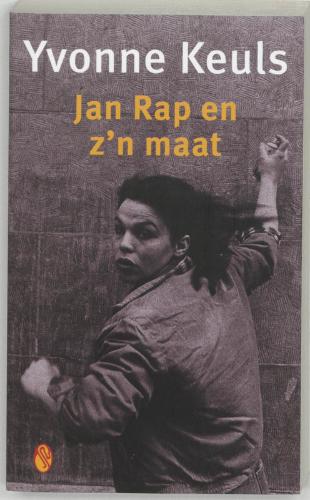
- Jan Rap en z’n maat
- Published by: Ambo (2006)
- Level: Beginner
- First Published in: 1977
An account of the experiences author Yvonne Keuls had working with children at a walk-in foster home in the Netherlands. Her various stories are all based on the real-life scenarios she encountered during the 70s.

Jan Rap en z’n maat was written by Dutch author Yvonne Keuls in 1977, and it introduces readers to various derailed characters in a walk-in foster home run by Yvonne herself and several other social workers. This book is an account of the experiences she had working with the children there, and her stories are based on the real-life scenarios she encountered. Yvonne is known for her social work, and she offers realistic insights into the world of young adolescents and their trials and tribulations.
The title emerged from the character of Gemma, a boisterous girl from Den Haag (The Hague). When she is admitted to a special program, in order to prepare her for social situations she is not yet capable of confronting, she is asked to fill-out several forms. On one of these, a question reads: "Who were you brought up by?" To which she replies: “Jan Rap en z’n maat.” “Jan Rap” is an expression dating back to the 17th century, referring to people considered to be from a low social class. Gemma, being her bubbly self, thus makes a joke out of her sorry situation by saying she was raised by the common man – “Jan Rap” – and all his friends.
"Yvonne is known for her social work, and she offers realistic insights into the world of young adolescents and their trials and tribulations."
The children arrive at the foster home from different places, and Yvonne does a brilliant job of staying true to their origins by not denying them their local accents and slang. Gemma, who is by far the most extroverted and colorful of the bunch, would not be as hilarious and intriguing were it not for her thick and blunt Haagse (or Den Haag) accent. People from Den Haag (in South Holland) use “ken” for “kan/kun” (can) and make their words cuter by hanging an “-ie” at the end, so that, for example, “gesprek” (discussion) turns into “gesprekkie.” A very popular expression in Den Haag is “wijfie,” which comes from “wijf” and probably counts as the equivalent of “bitch.” However, by adding the “-ie” suffix, it no longer sounds as aggressive, which is why it's used like “Hey, girl” might be in English.

Dutch profanities often revolve around diseases and various characters, especially Gemma, find funny ways of using them. The most commonly used profanities in Holland usually start with “Krijg de” (Get the) and are followed by “klere” (cholera), “tyfus” (typhoid fever), or “pokke” (smallpox). Also, these diseases can be used as direct insults by adding “lijer” (sufferer) at the end. A very endearing moment between Gemma and a fellow foster kid, the stuttering Charrie, revolves around the swear word “Rubbertrut” (Rubberbitch). Whenever Charrie gets upset enough with Gemma, he can manage the difficult word without a stutter.
Jan Rap en z’n maat is a beautiful story about the bonds that can form even during the darker moments in life, and it’s a reassuring reminder that there really are social institutions out there that have the best interests of disillusioned youths at heart.

